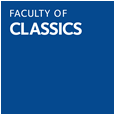This article examines the complex multilingualism of North Africa in antiquity and the early middle ages, using inscriptions, ancient literary sources, and linguistic analysis to reconstruct the shifting linguistic landscape. Before the Roman conquest, the main languages spoken in North Africa were Afro-Asiatic proto-Amazigh Berber languages, as well as Punic (a western branch of Semitic Phoenician) in the coastal regions where Phoenician colonists had established cities from the twelfth century BC. Rome’s conquest of the region had a profound linguistic impact: as Rome absorbed the former Carthaginian territories, and then the Numidian and Mauretanian kingdoms, Latin became the dominant language, both spoken and written. Latin inscriptions eventually replaced Punic and Libyco-Berber scripts in areas under Roman rule. However, this did not mean a complete linguistic shift. Bilingualism and even multilingualism were widespread. Greek, which in North Africa was primarily a language of elite education, was also spoken in many coastal cities as a language of trade. Punic remained the first language for many people until at least the fifth century AD, and in some areas even until four hundred years after the Arab conquest; it continued to be written, primarily in the Latin script, until the third century AD. Texts in the proto-Amazigh Berber languages were still inscribed on funerary stelae in the third century AD, and these languages were doubtless spoken too. After the third century, direct evidence of the use of Berber languages within the Roman-controlled areas of the Maghreb disappears. They may have died out in Roman North Africa, except in the Kabylia region in modern Algeria; if they did survive, they were nevetheless profoundly modified in the fifth century AD by a process of linguistic levelling when tribal incursions and migrations from the Sahara introduced a different Berber language. With the Arab conquest in the seventh century, Latin lost its status as a language of administration, governance, and power, but it persisted in some regions as a spoken language until as late as the fifteenth century.
The linguistic landscape of late antique North Africa
Keywords:
NORTH AFRICA LATIN GREEK BERBER LANGUAGES PUNIC LATE ROMAN LATE ANTIQUITY



